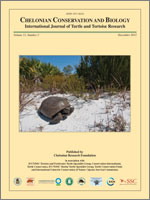Maximilian's snake-necked turtle, Hydromedusa maximiliani, is an endemic and vulnerable long-lived freshwater turtle from eastern Atlantic mountainous rainforest regions of Brazil. Three scenarios (real population, optimistic population, and pessimistic population) based on the species' life-history data and carrying capacity estimates collected throughout 13 yrs were generated with VORTEX and subjected to sensitivity tests to verify the influence of demographic (mortality rate and inbreeding depression) and environmental (fire and deforestation catastrophes) parameters on population viability. The results showed significant differences among the viability scenarios, with extinction probability ranging from 6% to 99%. These analyses illustrate that environmental and demographic stochasticity can negatively impact populations of H. maximiliani and emphasize the necessity of protecting areas for long-lived organisms inhabiting regions impacted by humans.
How to translate text using browser tools
1 December 2012
Population Viability Analysis of a Long-Lived Freshwater Turtle, Hydromedusa maximiliani (Testudines: Chelidae)
Shirley Famelli,
Sarah Cristina Piacentini Pinheiro,
Franco Leandro Souza,
Rafael Morais Chiaravalloti,
Jaime Bertoluci
ACCESS THE FULL ARTICLE
Brazilian Atlantic rain forest
Chelidae
Hydromedusa maximiliani
population viability analysis
Testudines
vortex





